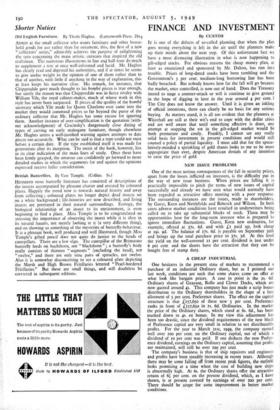Shorter Notices
Old English Furniture. By Therle Hughes. (Lutterworth Press. 21s.) AIMED at the small collector who wants furniture and other house- hold goods for use rather than for ornament, this, the first of a new " collectors' series," admirably achieves the purpose of enlightening the tyro concerning the main artistic currents that inspired the old craftsman. The numerous illustrations in line and half-tone do much to supplement a text at once well-informed and lucid. Mr. Hughes has clearly rcad and digested his authorities, and if at times he seems to give undue weight to the opinion of one of them rather than to that of another, with little if anything in the way of explanation, this at least keeps his narrative clear. His remark, for instance, that Chippendale gave much thought to his bombe pieces is true enough, but surely the reason was that Chippendale was in fierce rivalry with William Vile, the royal cabinet-maker, much of whose work in this style has never been surpassed. If pieces of the quality of the bombe secretary which Vile made for Queen Charlotte ever came into the market they would command prices so far beyond the purse of the ordinary collector that Mr. Hughes has some excuse for ignoring them. Another instance of over-simplification is the quotation (with- out acknowledgment) of Cescinsky's dangerously close dating of types of carving on early mahogany furniture, though elsewhere Mr. Hughes utters a well-justified warning against attempts to date pieces too accurately. What can be said is that a type could not exist before a certain date. If the type established itself it was made for generations after its inception. The merit of the book, however, lies in its clear indication of the main lines of study. Once these have been firmly grasped, the amateur can confidently go forward to more detailed studies in which the arguments for and against the opinions expressed receive fuller consideration.


































 Previous page
Previous page